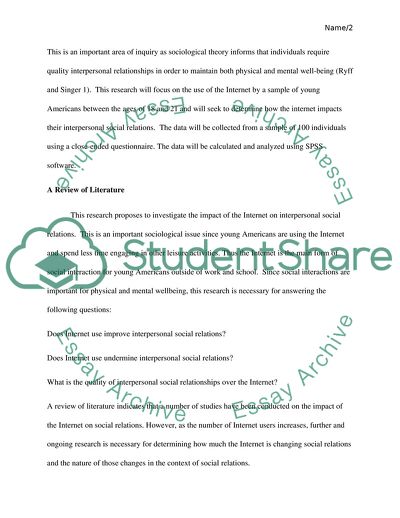Cite this document
(Empirical Evidence of the Impact of the Internet on Interpersonal Research Paper Example | Topics and Well Written Essays - 2500 words - 9, n.d.)
Empirical Evidence of the Impact of the Internet on Interpersonal Research Paper Example | Topics and Well Written Essays - 2500 words - 9. https://studentshare.org/sociology/1808049-research-paper
Empirical Evidence of the Impact of the Internet on Interpersonal Research Paper Example | Topics and Well Written Essays - 2500 words - 9. https://studentshare.org/sociology/1808049-research-paper
(Empirical Evidence of the Impact of the Internet on Interpersonal Research Paper Example | Topics and Well Written Essays - 2500 Words - 9)
Empirical Evidence of the Impact of the Internet on Interpersonal Research Paper Example | Topics and Well Written Essays - 2500 Words - 9. https://studentshare.org/sociology/1808049-research-paper.
Empirical Evidence of the Impact of the Internet on Interpersonal Research Paper Example | Topics and Well Written Essays - 2500 Words - 9. https://studentshare.org/sociology/1808049-research-paper.
“Empirical Evidence of the Impact of the Internet on Interpersonal Research Paper Example | Topics and Well Written Essays - 2500 Words - 9”. https://studentshare.org/sociology/1808049-research-paper.


